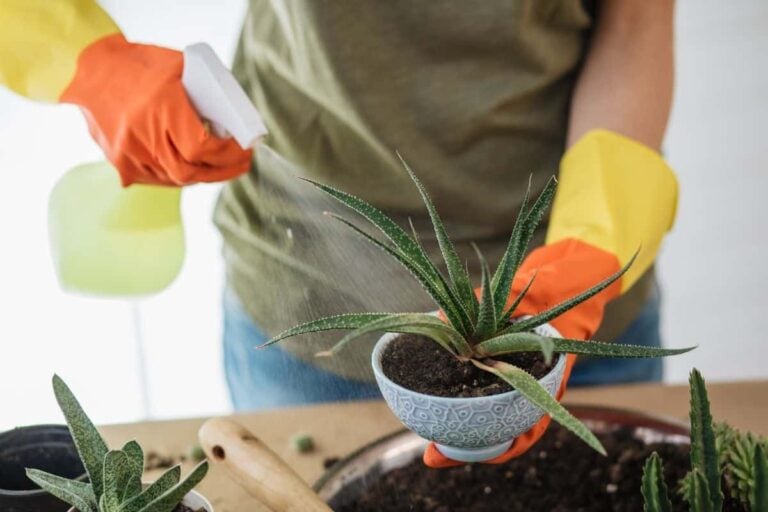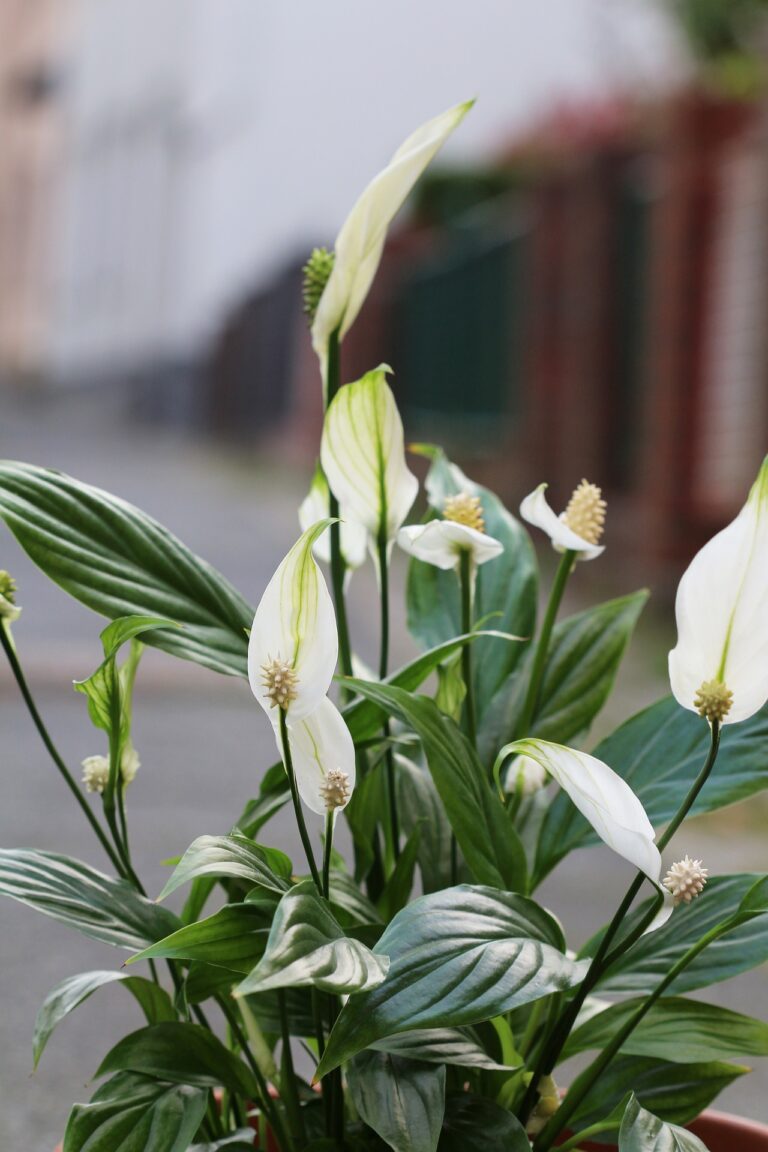Blue Plumbago Maintenance Guide
Looking for a plant that is gorgeous yet easy to care for? Look no further than blue plumbago. It will grow happily as a shrub in your warmer garden or as a lovely container plant for your porch. This South African native plant thrives best in full sun to partial shade in fertile soils. Continue reading to learn about this beautiful evergreen shrub.
>> Check out blue plumbagos on Amazon <<
What Is Blue Plumbago?
Blue plumbago (Plumbago auriculata) is part of the Plumbaginaceae Family. The name comes from the Latin word “plumbum” which means lead, hence, the other common family name, Leadwort. The origin of the name lead is uncertain. Some say it refers to its color or the dye you can make from it. The folklore says it was a cure for lead poisoning. In any case, it’s a nice plant.
You might find a plant with the same common name but with the scientific name, Ceratostigma plumbaginoides. Though different plants, they are in the same family and have similar care requirements. The primary difference is that this one is more winter hardy than its counterparts.
Blue plumbago originated in South Africa. You’ll also see it called cape leadwort, royal cape, or even skyflower. The second part of its name, auriculata, is Latin for eared, referring to the leaf base. We’ll leave it to you to decide if it’s appropriately named. However, the fact that it is from South Africa should give some clues about what this plant needs to be happy.
Benefits of Blue Plumbago
It is a perennial evergreen shrub that grows by spreading outward. It has slender stems which, when given a chance in its native habitat, can grow up to seven feet tall with adequate support. You can train it on a trellis. Even if you keep it to a compact size as a shrub, it makes an excellent border plant. It will fit in nicely with a cottage garden or other informal landscape.
>> Get your own blue plumbago <<
Growing Blue Plumbago
You can grow blue plumbago as an outdoor plant in USDA Hardiness Zones 8 through 11. Though it can handle colder temperatures to some degree, 10 degrees Fahrenheit is its lowest extreme temperature. Outdoor plants will do best if you cover them with mulch before winter begins. Live in a different hardiness zone? You can still have blue plumbago in your garden.
In cooler areas, you can have it in a container plant and bring it indoors to overwinter in a sunny room. As a patio plant, it’ll make a delightful display in a decorative container with its gorgeous flowers cascading over the sides. Because of its delicate stems, you should place it in an area where it will be protected from strong winds that can damage its stems.
Light
Blue plumbago prefers full sun with at least six hours of direct sunlight for the maximum amount of blooms. If your site gets less exposure, no worries. It can tolerate partial shade, but it will flower less. But when it gets the sunlight it wants, it will bloom throughout the season until the first frost. Its blue, phlox-like flowers will continue to brighten your garden.
Moisture
For new plants, you should keep the soil moist to give them a chance to become established. Once that happens, blue plumbago is drought tolerant. You can let the soil dry between waterings. As with many plants, you’ll need to find that balance between too much and just enough water. Too much moisture can lead to root rot, especially in a container plant.
Its Garden Place
You should plant blue plumbago in areas where it won’t have to compete with other plants. As you may guess, it won’t fare well with aggressive plants that would easily overtake it. On the other hand, butterflies adore blue plumbago. Plant it, and they will come. But that’s not its only value. Butterflies aren’t the only ones that will appreciate it.
It makes an excellent addition to a wildlife garden. The birds will like its dense growth that can offer them cover. And deer typically give it a pass. They rarely will do severe damage to blue plumbago. If deer pressure is heavy in your area, it offers a smart option. However, remember that a hungry deer is less picky.
Maintenance
You’ll need to do relatively little maintenance with blue plumbago outside of the basic care. One thing you will need to do is pruning. Since it flowers on new wood growth, you should prune your plants before new growth starts in the spring. Late winter or early spring are the best times for pruning. Pruning offers many benefits for both you and your plants.
Regular pruning will encourage that dense growth of blooms that make blue plumbago such an excellent choice for your garden. You should also remove any dead or damaged branches to keep your plants healthy. Inspect your plants occasionally because of its weak stems. Because it grows fast, you may need to prune more often to keep its growth in check.
>> Buy a blue plumbago on Amazon <<
If you have a container plant, you can bring it indoors over the winter. It will fare best in a sunny location. However, you can also cut it back and let it overwinter in a cool basement or garage. It will reward you with a fresh batch of pale-blue blooms the following spring. For the most part, blue plumbago is hassle-free with few insect problems. And we like low maintenance.
This video from the Utah State University Extension explains the proper ways to prune shrubs to keep them happy and to encourage new growth.
Soil and Fertilizing
Blue plumbago prefers well-draining soils that are nutrient rich. That means a regular application of a fertilizer during the growing season. It grows fast, so it’ll need the nutrients to support new growth. It does best in soils with some loam. You can also amend your soil to match its needs. This tolerant plant offers an attractive, low maintenance addition to your garden.
Photo by Sabrap59 licensed under CC0.
Also Read: Broadleaf Lady Palm


